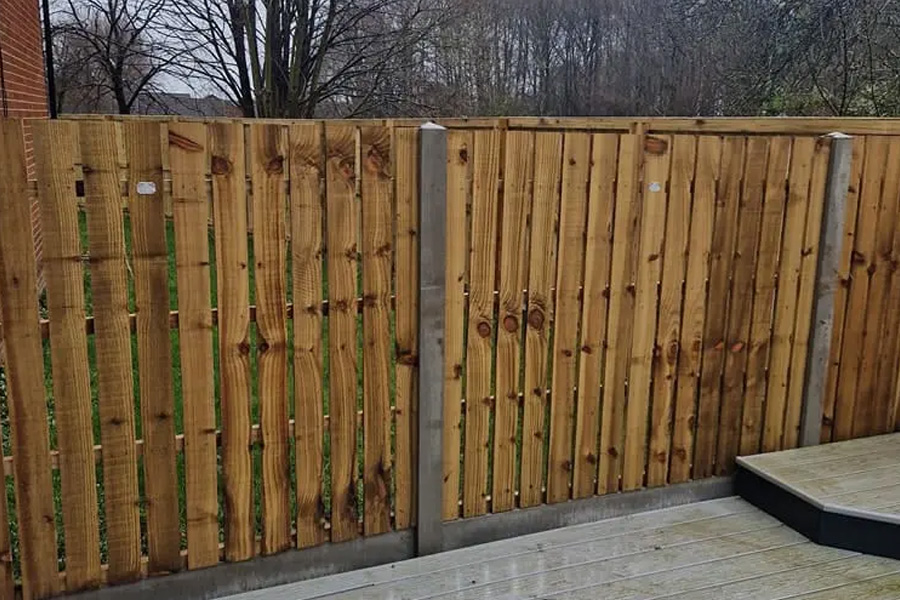Eco-Friendly Fencing Options That Are Taking Yorkshire by Storm!
June 17, 2024When it comes to home and garden improvements, the choice of fencing is often overlooked. However, with growing environmental awareness, homeowners in Yorkshire are increasingly seeking sustainable alternatives. Eco-friendly fencing is not only good for the planet but also adds value and aesthetic appeal to properties. In this article, we will explore various sustainable fencing Leeds materials, delve into their benefits, and understand why these options are gaining popularity, particularly in cities like Leeds.
The Rise of Eco-Friendly Fencing
In recent years, there has been a significant shift towards environmentally conscious living. This trend is evident in the increasing demand for eco-friendly fencing in Yorkshire, particularly in urban areas like Leeds. Homeowners are recognising the impact of traditional fencing materials on the environment and are opting for greener alternatives. This change is driven by several factors:
1. Environmental Awareness:
People are more informed about the environmental impact of their choices. Traditional fencing materials like vinyl and treated wood have significant ecological footprints due to their production processes and chemical treatments.
2. Aesthetic Appeal:
Sustainable fencing options often blend more naturally with the environment, providing a more harmonious look to gardens and outdoor spaces.
3. Longevity and Durability:
Many eco-friendly materials are incredibly durable, offering long-term solutions that reduce the need for frequent replacements.
4. Legislation and Incentives:
Governments and local councils are promoting sustainable living through incentives and regulations, encouraging the adoption of eco-friendly practices.
Popular Eco-Friendly Fencing Materials
1. Bamboo Fencing
Bamboo is a rapidly renewable resource, making it an excellent choice for sustainable fencing. It grows quickly and can be harvested without causing long-term damage to the environment. Bamboo fencing is durable, strong, and offers a unique aesthetic appeal that can complement both modern and traditional garden designs.
- Advantages: Rapid growth, renewable resource, natural appearance.
- Disadvantages: Requires regular maintenance to prevent weather damage.
2. Recycled Composite Fencing
Composite fencing is made from a blend of recycled wood fibres and plastic. This material is highly durable and requires minimal maintenance. It can mimic the appearance of wood without the environmental drawbacks associated with deforestation and chemical treatments.
- Advantages: Durable, low maintenance, made from recycled materials.
- Disadvantages: Higher initial cost compared to traditional wood.
3. Reclaimed Wood Fencing
Using reclaimed wood is an excellent way to reduce waste and give new life to old materials. Reclaimed wood fences can add a rustic charm to any property and are often available in a variety of styles and finishes.
- Advantages: Reduces waste, unique aesthetic, often more affordable.
- Disadvantages: May require more maintenance and treatment to ensure longevity.
4. Living Fences
Living fences, also known as hedgerows, consist of plants and shrubs arranged to create a natural barrier. These fences are not only sustainable but also enhance biodiversity by providing habitats for various species.
- Advantages: Environmentally friendly, supports local wildlife, visually appealing.
- Disadvantages: Requires regular maintenance and time to establish.
5. Metal Fencing
Metal fencing, particularly steel and aluminium, can be sustainable options if sourced responsibly. These materials are highly durable and can be recycled at the end of their life cycle. Powder-coated metal fences offer additional protection against rust and weathering.
- Advantages: Long-lasting, recyclable, low maintenance.
- Disadvantages: Can be expensive, may not blend as naturally with certain landscapes.
Why Eco-Friendly Fencing is Popular in Leeds
Leeds, being one of Yorkshire’s largest cities, has seen a significant increase in the adoption of eco-friendly fencing. Several factors contribute to this trend:
Urban Green Spaces
Leeds is known for its beautiful parks and green spaces. The city’s residents often seek to extend this greenery into their own gardens, and eco-friendly fencing solutions align perfectly with this goal. Living fences, for example, integrate seamlessly with the surrounding flora, enhancing the overall aesthetic of the area.
Community Initiatives
Community-driven sustainability initiatives have a strong presence in Leeds. These initiatives often promote eco-friendly practices, including the use of sustainable materials for fencing. Local workshops and awareness campaigns have educated residents about the benefits of eco-friendly fencing options.
Environmental Policies
Leeds City Council has implemented various environmental policies aimed at reducing the city’s carbon footprint. These policies encourage the use of sustainable materials in construction and renovation projects, including fencing. Homeowners looking to align with these policies are naturally gravitating towards eco-friendly fencing solutions.
Health and Well-being
The COVID-19 pandemic has heightened awareness of the importance of outdoor spaces for mental and physical well-being. As a result, homeowners in Leeds are investing more in their gardens, seeking eco-friendly fencing options that promote a healthier environment.
Benefits of Eco-Friendly Fencing
Choosing eco-friendly fencing offers numerous benefits beyond environmental sustainability. Here are some key advantages:
1. Cost-Effectiveness
While some eco-friendly fencing materials may have a higher upfront cost, they often prove to be cost-effective in the long run. Materials like composite fencing and metal fences require less maintenance and have longer lifespans, reducing the need for replacements and repairs.
2. Enhanced Property Value
Sustainable and aesthetically pleasing fencing can significantly enhance the value of a property. Eco-conscious buyers are often willing to pay a premium for homes that incorporate green practices and sustainable materials.
3. Health and Safety
Eco-friendly fencing materials are generally free from harmful chemicals found in traditional fencing, such as pressure-treated wood. This makes them safer for households, particularly those with children and pets.
4. Environmental Impact
By choosing sustainable fencing materials, homeowners contribute to the reduction of deforestation, pollution, and waste. This helps preserve natural resources and promotes a healthier planet for future generations.
5. Biodiversity
Living fences and other natural barriers support local biodiversity by providing habitats for birds, insects, and other wildlife. This contributes to the overall health of the ecosystem.
How to Choose the Right Eco-Friendly Fencing
When selecting eco-friendly fencing for your property, consider the following factors:
1. Purpose and Function
Determine the primary purpose of your fence. Is it for privacy, security, decoration, or to keep pets contained? Different materials and styles serve different functions, so choose accordingly.
2. Local Climate
Consider the climate in your area. Some materials, like bamboo, may not withstand harsh winters, while others, like metal, can endure various weather conditions with minimal maintenance.
3. Maintenance Requirements
Evaluate how much time and effort you are willing to invest in maintaining your fence. Living fences and reclaimed wood may require more upkeep compared to composite or metal options.
4. Aesthetic Preferences
Think about the overall look you want to achieve. Eco-friendly fencing comes in various styles and finishes, so choose one that complements your property’s design.
5. Budget
While some eco-friendly options may be more expensive initially, consider the long-term savings on maintenance and replacements. Weigh the upfront costs against the potential long-term benefits.
Installation and Maintenance Tips
Installation
Proper installation is crucial for the longevity and effectiveness of your eco-friendly fence. Here are some tips to ensure a successful installation:
Hire Professionals:
For complex fencing projects, it’s advisable to hire professional installers who have experience with eco-friendly materials. This ensures proper installation and adherence to local regulations.
Plan Ahead:
Before starting the installation, plan the layout and take accurate measurements. This helps avoid unnecessary waste and ensures you purchase the right amount of materials.
Use Sustainable Practices:
During installation, use sustainable practices such as avoiding the use of harmful chemicals and minimising waste.
Maintenance
Regular maintenance extends the life of your eco-friendly fence and keeps it looking its best. Here are some maintenance tips:
Clean Regularly:
Remove dirt, debris, and organic matter that can cause damage over time. Use eco-friendly cleaning solutions to avoid harming the environment.
Inspect for Damage:
Periodically check for signs of damage such as rot, rust, or insect infestation. Address any issues promptly to prevent further deterioration.
Treat and Seal:
For materials like wood and bamboo, apply eco-friendly treatments and sealants to protect against weathering and pests.
Trim Vegetation:
If you have a living fence, keep plants trimmed and healthy. Regular pruning promotes growth and maintains the fence’s appearance.
Conclusion
Eco-friendly fencing is more than just a trend; it’s a commitment to sustainable living and environmental responsibility. In Yorkshire, and particularly in urban centres like Leeds, these sustainable fencing options are rapidly gaining popularity. Whether you’re drawn to the natural beauty of bamboo, the durability of recycled composite, or the biodiversity benefits of a living fence, there’s an eco-friendly solution to suit every need.
By choosing eco-friendly fencing, you’re not only enhancing the aesthetic and value of your property but also contributing to a healthier planet. As more homeowners in Leeds and beyond make this conscious choice, the future looks greener and more sustainable for all. So, if you’re considering a new fence, why not explore the eco-friendly options available and join the movement that’s taking Yorkshire by storm?













